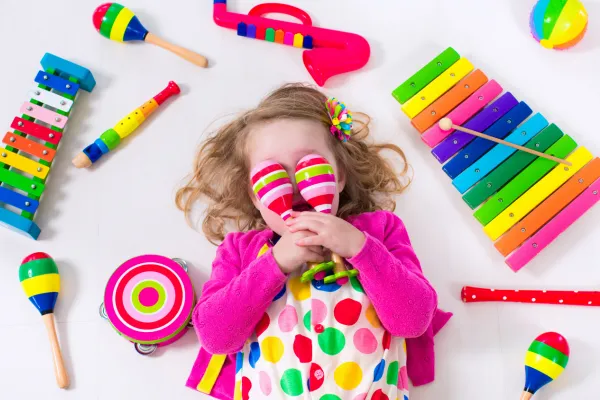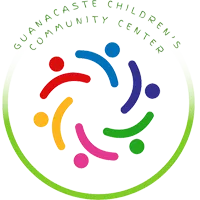Learning Hub
Welcome to the Learning Hub! Explore expert insights and tips on child development, education, and wellness.

5 Incredible Benefits of Music and Movement for Young Kids
“If children hear fine music from the day of their birth and learn to play it, they develop sensitivity, discipline and endurance. They get a beautiful heart.” - Shinichi Suzuki
Introduction
In today’s busy world, parents and educators are always searching for activities that keep young children engaged while helping them grow. Music and movement are perfect for this. These activities are fun and offer many benefits for kids 5 and under. From boosting brain power to improving physical health, the positive effects of music and movement are amazing. In this article, we’ll explore the top five benefits of music and movement for young children and why they should be a part of their daily routine.
1. Boosts Brain Power
Enhances Memory
Music and movement play a crucial role in enhancing memory skills in young children. When kids learn the words to a song or the steps to a dance routine, they are engaging in activities that require them to remember sequences and patterns. This process not only makes the activity enjoyable but also significantly boosts their memory retention. Repeated exposure to musical patterns and movements helps solidify these memories, making it easier for children to recall them later. For instance, many educational songs incorporate repetitive lyrics and actions, which can help children memorize important concepts such as the alphabet, numbers, and more.
Improves Language Skills
Singing songs and nursery rhymes is a fantastic way for kids to learn new words and language structures. The rhythmic patterns in music help develop phonemic awareness, which is essential for reading skills. When children sing along to songs, they practice the sounds of letters and words, which helps them understand how language works. Nursery rhymes and simple songs often have a repetitive structure, making it easier for children to anticipate what comes next and thereby reinforcing their understanding of language. Additionally, music can introduce children to different languages and cultures, broadening their linguistic and cultural horizons.
2. Builds Strong Bodies
Develops Motor Skills
Activities like dancing, clapping, and playing instruments are excellent for developing both fine and gross motor skills. Fine motor skills are honed when children manipulate small objects, such as playing the keys of a piano or holding drumsticks. These activities require precision and control, which help strengthen the small muscles in their hands and fingers. Gross motor skills, on the other hand, are developed through larger movements like dancing, jumping, and running. These activities help improve balance, coordination, and overall physical strength. For example, a simple activity like clapping to the beat of a song can help children develop a sense of rhythm and timing, while also enhancing their motor skills.
Promotes Fitness
Music and movement activities are a fun and engaging way to promote physical fitness among young children. Dancing, in particular, is a fantastic cardiovascular workout that helps maintain a healthy weight and improves overall physical health. The energetic movements involved in dancing get the heart pumping, which strengthens the cardiovascular system. Additionally, dancing helps improve flexibility, balance, and muscle tone. Regular participation in these activities not only keeps children physically active but also helps them develop a love for fitness that can last a lifetime. Incorporating music and movement into daily routines can make exercise feel less like a chore and more like a fun activity.
3. Supports Emotional Growth
Encourages Emotional Expression
Music provides an excellent outlet for children to express their emotions. Through music and movement, children can convey their feelings in a healthy and creative way. For instance, a child might dance joyfully to an upbeat song or sway gently to a calming melody, each movement reflecting their emotional state. This form of expression helps children develop emotional intelligence and self-awareness, as they learn to recognize and articulate their emotions. Moreover, creating music or moving to music can be a therapeutic experience, helping children manage and process their emotions more effectively.
Reduces Stress
Engaging in music and movement activities can be a great way for children to relieve stress. The physical activity involved in dancing or moving to music releases endorphins, which are natural mood lifters. Additionally, music has a soothing effect that can help reduce feelings of anxiety and stress. For example, listening to calming music can help children relax and unwind after a busy day. The rhythmic patterns and melodies in music can provide a sense of structure and predictability, which can be comforting to young children.
4. Fosters Social Skills
Promotes Social Interaction
Music and movement activities often involve group participation, which encourages social interaction. Whether it's a dance class, a music group, or a sing-along session, these activities provide opportunities for children to interact with their peers. Through these interactions, children learn important social skills such as taking turns, sharing, and cooperating with others. For example, in a group dance activity, children must coordinate their movements with their peers, which fosters a sense of teamwork and cooperation. These social experiences are crucial for developing healthy relationships and effective communication skills.
Teaches Teamwork
Participating in group music and movement activities teaches children the importance of cooperation and teamwork. In a dance group or a musical ensemble, children must listen to each other and work together to create a harmonious performance. This collaborative effort helps children understand the value of working together towards a common goal. Additionally, these activities can teach children to appreciate the contributions of others and develop a sense of community. For instance, playing in a band or orchestra requires children to synchronize their actions and listen to the group's overall sound, fostering a sense of unity and teamwork.
5. Sparks Creativity
Stimulates Imagination
Music and movement activities are excellent for stimulating a child's creativity. Whether it's creating their own dance routine, improvising on a musical instrument, or composing their own songs, these activities provide endless opportunities for creative expression. For example, a child might use imaginative play to act out a story through dance or create unique rhythms on a drum. These creative activities encourage children to think outside the box and explore new ways of expressing themselves. Engaging in music and movement helps children develop their creative thinking skills, which can be beneficial in many areas of life.
Encourages Problem-Solving
Engaging in musical activities requires children to think critically and solve problems. For example, learning to play a new instrument involves figuring out how to produce the correct notes and rhythms. Similarly, creating a dance routine requires planning and coordination to ensure the movements flow smoothly. These activities challenge children to use their problem-solving skills and think creatively to overcome obstacles. Additionally, working through these challenges can boost a child's confidence and resilience, as they learn to persist and find solutions. Music and movement provide a fun and engaging way for children to develop these important cognitive skills.
Conclusion
The benefits of music and movement for young children are numerous. From boosting brain power to building strong bodies, these activities support a child's overall growth. By incorporating music and movement into a child’s daily routine, parents and educators can ensure kids have fun while developing essential skills that will benefit them throughout their lives.
Engaging in music and movement from a young age is a powerful way to support a child’s holistic development. Whether it’s singing, dancing, playing instruments, or creative movement activities, the positive impacts are undeniable. Let’s embrace the power of music and movement and watch our kids thrive.
FAQs
1. What are the benefits of music and movement for young children?
Music and movement benefit young children by boosting memory and language skills, improving motor skills and fitness, encouraging emotional expression, promoting social interaction and teamwork, and stimulating imagination and problem-solving abilities.
2. How do music and movement activities help in developing fitness in young children?
These activities keep kids active, provide a good cardiovascular workout through dancing, develop muscle strength and coordination, and foster a love for fitness from an early age.
3. How do music and movement support creativity?
Music and movement encourage creative thinking, allow kids to express themselves, teach critical thinking skills, and provide a space for exploring artistic ideas.
4. How can music help develop a young child's brain?
Music enhances memory through songs, expands vocabulary and language use, improves attention span, and supports cognitive development by relating to mathematical concepts.

At Guanacaste Children's Community Center, we offer bilingual Montessori education in a nurturing environment. Located near Tamarindo, Costa Rica, our programs inspire curiosity, creativity, and a love for learning. Join our vibrant community and give your child the opportunity to thrive through nature, hands-on activities, and personalized attention.
@ 2025 Guanacaste Children's Community Center. All Rights Reserved.
